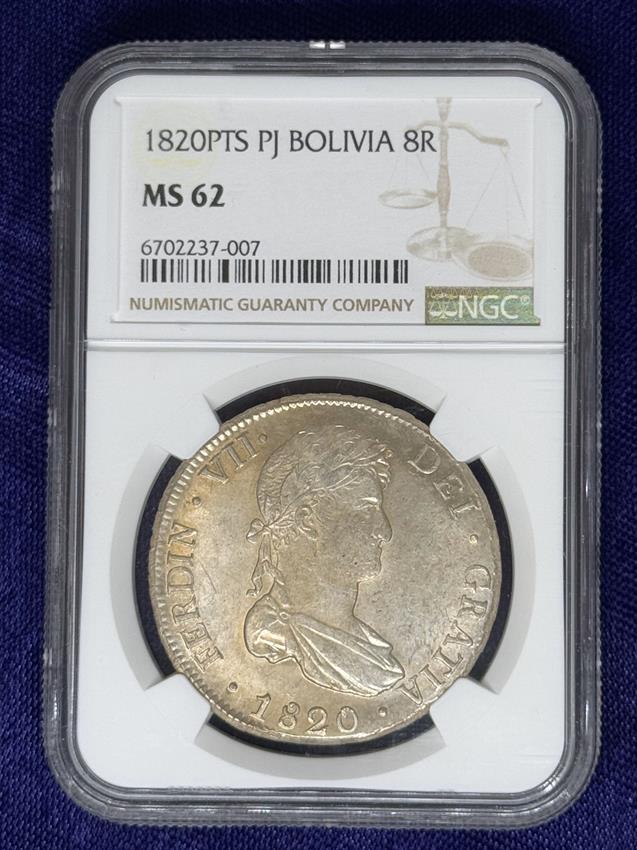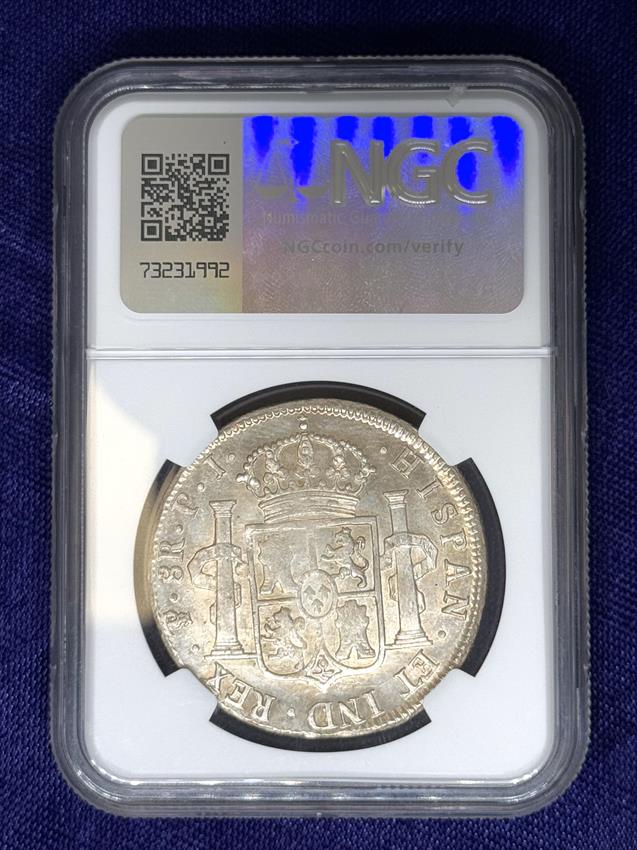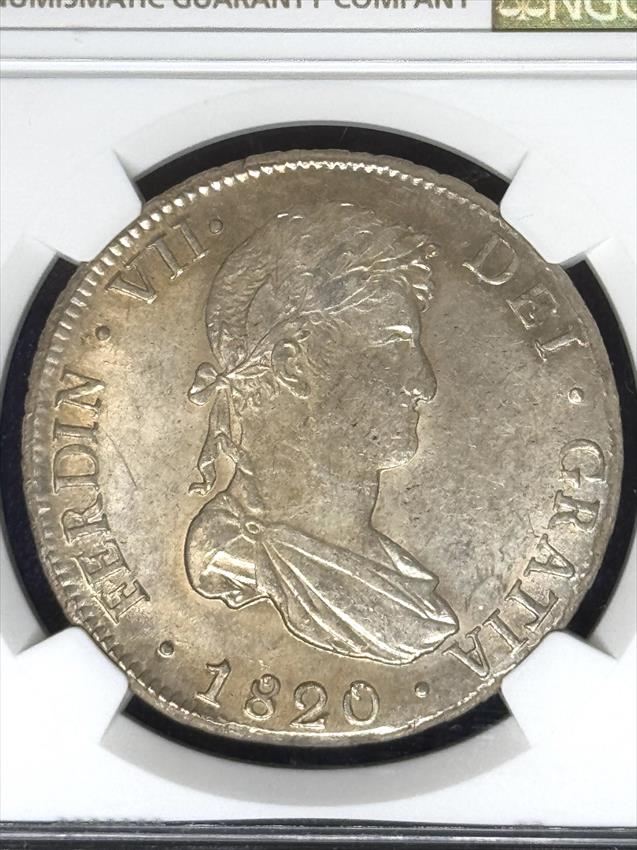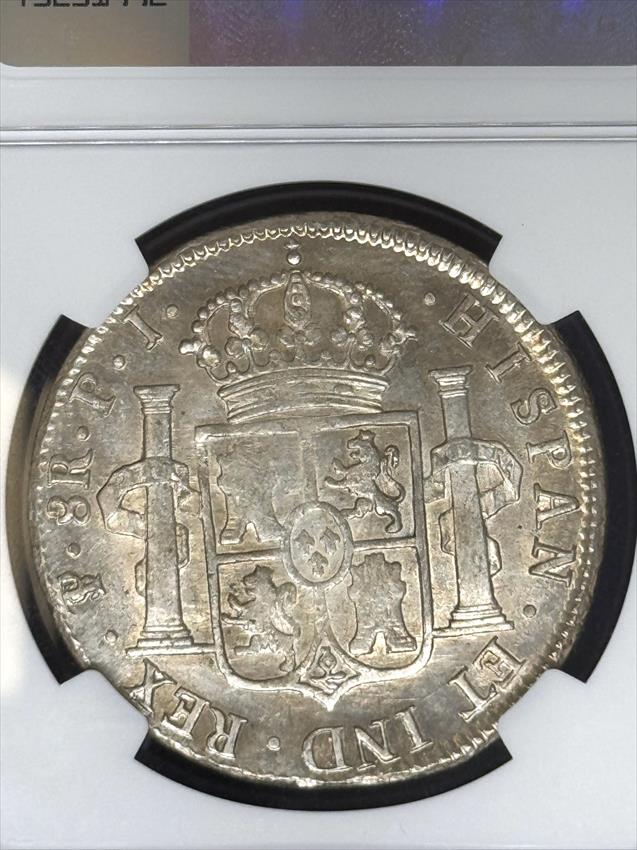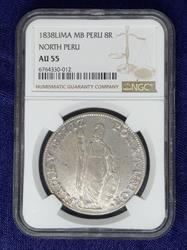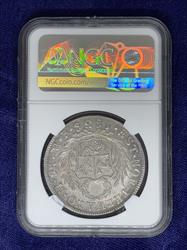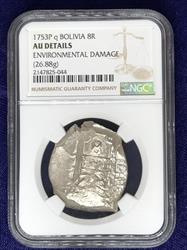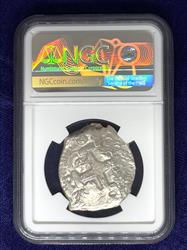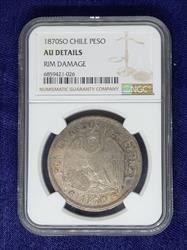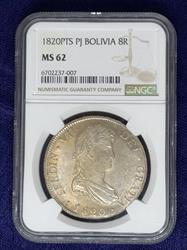
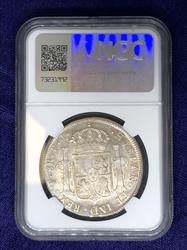
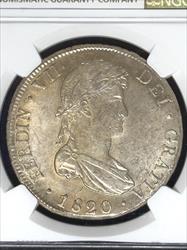
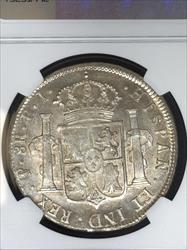
Bolivia Ferdinand VII Silver 8 Reales 1820P q MS 62
$1,100.00
$1,135.75
Check/Wire
Credit Card
| Quantity | Check/Wire | Credit Card |
|---|---|---|
| 1+ | 1,100.00 | 1,135.75 |
- SKU: BFB005801
- Categories: WORLD THE AMERICAS CENTRAL AND SOUTH AMERICA
The Spanish-Colonial real was a silver coin used in the Spanish colonies in the Americas and the Philippines. These coins started out as cobs, irregular pieces of silver that were hammered on dies, but evolved into coins that look more like the ones we use today.
When this coin was minted, the area now known as Bolivia was still a Spanish colony. Spain began its conquest of the region, which at the time was part of the Incan Empire, in 1524. By 1533, most of the land was under Spanish control - however, the Guaycuru people indigenous to the Chaco region resisted Spain and kept their independence into the early 1900s. During the Spanish colonial period, the region was part of the Viceroyalty of Peru. Pre-Bolivia’s silver mines were very important to the Spanish Empire, especially Cerro Rico (“Rich Mountain”) near the city of Potosi. For a few centuries, Potosi was the largest city in the New World, producing as much as 60% of the silver mined globally during the second half of the 16th century. While some indigenous people adapted to Spanish culture, others under Spanish control resented the colonizers and rebelled. In the 18th century, there were over 100 revolts in what are now Bolivia and Peru. Bolivia did not gain sovereignty until 1825, naming itself after Simón Bolívar, who led many colonies to victory in the Spanish American wars of independence.
This coin was graded MS 62 (Mint State 62), using the Sheldon grading scale from 1 to 70. It was graded by the Numismatic Grading Company, the official grading service of the American Numismatic Association and the Professional Numismatists Guild. This coin also has some environmental damage, as indicated on the NGC slab. Here is more information about the coin grade.
Obverse: FERDIN VII DEI GRATIA 1820 (translation: Ferdinand 7th. by grace of God 1820) Bust of king Ferdinand VII
Reverse: HISPAN . ET IND . REX . PTS . 8R . P . J . (Hispaniarum Et Indiarum Rex, translation: King of Spain and the Indies) Arms of Spain
Reference: KM 84
When this coin was minted, the area now known as Bolivia was still a Spanish colony. Spain began its conquest of the region, which at the time was part of the Incan Empire, in 1524. By 1533, most of the land was under Spanish control - however, the Guaycuru people indigenous to the Chaco region resisted Spain and kept their independence into the early 1900s. During the Spanish colonial period, the region was part of the Viceroyalty of Peru. Pre-Bolivia’s silver mines were very important to the Spanish Empire, especially Cerro Rico (“Rich Mountain”) near the city of Potosi. For a few centuries, Potosi was the largest city in the New World, producing as much as 60% of the silver mined globally during the second half of the 16th century. While some indigenous people adapted to Spanish culture, others under Spanish control resented the colonizers and rebelled. In the 18th century, there were over 100 revolts in what are now Bolivia and Peru. Bolivia did not gain sovereignty until 1825, naming itself after Simón Bolívar, who led many colonies to victory in the Spanish American wars of independence.
This coin was graded MS 62 (Mint State 62), using the Sheldon grading scale from 1 to 70. It was graded by the Numismatic Grading Company, the official grading service of the American Numismatic Association and the Professional Numismatists Guild. This coin also has some environmental damage, as indicated on the NGC slab. Here is more information about the coin grade.
Obverse: FERDIN VII DEI GRATIA 1820 (translation: Ferdinand 7th. by grace of God 1820) Bust of king Ferdinand VII
Reverse: HISPAN . ET IND . REX . PTS . 8R . P . J . (Hispaniarum Et Indiarum Rex, translation: King of Spain and the Indies) Arms of Spain
Reference: KM 84

